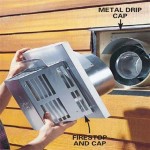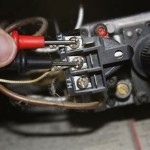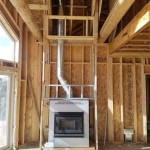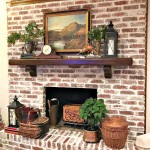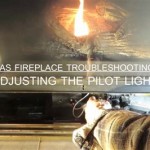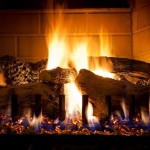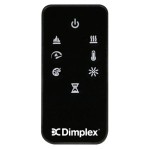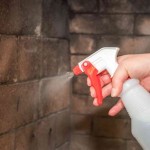Installing a Flat Screen TV Over a Stone Fireplace: Ideas and Considerations
Mounting a flat-screen television above a stone fireplace has become an increasingly popular design choice in modern homes. This configuration offers a centralized entertainment hub and maximizes space utilization. However, the process presents unique challenges due to the nature of the stone material, heat considerations, and aesthetic implications. Thorough planning and careful execution are crucial for a successful and safe installation.
Before beginning any installation, assessing the structural integrity of the stone fireplace and the surrounding wall is paramount. Natural stone, such as granite, slate, or limestone, varies significantly in density and composition. Mortar joints can weaken over time, and the overall stability of the structure must be determined. Consulting with a qualified structural engineer or contractor is advisable, especially with older fireplaces or those exhibiting signs of deterioration. The wall's framing behind the stone veneer also needs to be assessed to ensure it can adequately support the weight of the television and mounting hardware.
Heat management is another critical factor. Fireplaces generate significant heat, and excessive exposure can damage sensitive electronic components within the television. Understanding the type of fireplace – wood-burning, gas, or electric – is crucial as each produces heat at different intensities and in distinct patterns. Wood-burning fireplaces typically emit the most heat, potentially requiring extensive heat shielding measures. Gas fireplaces offer more controlled heat output, while electric fireplaces produce the least amount of heat, making them more suitable for this type of installation. Regardless, proper ventilation and heat deflection strategies are essential to protect the television from potential damage and ensure its longevity.
Aesthetic considerations also play a crucial role in the final result. The size of the television should be proportionally balanced with the scale of the fireplace and the surrounding room. A television that is too large can overwhelm the space, while one that is too small can appear insignificant. The mounting height should also be carefully considered to ensure comfortable viewing. Ideally, the center of the television screen should be at or slightly below eye level when seated. Furthermore, concealing cables and wires is essential for a clean and professional look. Options include running cables through the wall, using cable management sleeves, or employing paintable wire covers.
Determining Feasibility and Necessary Preparations
The initial step involves a comprehensive assessment of the existing fireplace structure and its surrounding environment. This includes evaluating the type of stone used, the condition of the mortar joints, the presence of any structural cracks, and the composition of the wall behind the stone veneer. Soft or porous stones like certain types of sandstone may be more prone to cracking under the stress of drilling and mounting hardware. Similarly, deteriorated mortar joints can compromise the stability of the stone facing, making it difficult to securely anchor the television mount.
A thorough inspection of the wall framing behind the fireplace is also necessary. The framing should be robust enough to support the combined weight of the television, the mount, and any associated hardware. If the existing framing is inadequate, reinforcement may be required. This could involve adding additional studs or incorporating a backing board made of plywood or OSB to provide a more secure mounting surface. This backing board should be securely fastened to the existing studs to distribute the weight evenly.
Accurate measurements are crucial for determining the optimal television size and mounting height. Measure the width and height of the fireplace and the surrounding wall to ensure the television is proportionally balanced. Consider the viewing distance from the seating area to determine the appropriate screen size. A general rule of thumb is that the viewing distance in inches should be roughly 1.5 to 2.5 times the diagonal screen size. Measure the desired viewing height to ensure the television is positioned at a comfortable level. Ideally, the center of the screen should be at or slightly below eye level when seated.
Gathering the necessary tools and materials is essential for a smooth and efficient installation. These include a drill with masonry bits suitable for drilling through stone, a stud finder to locate wall studs, a level to ensure the television is mounted straight, a tape measure for accurate measurements, a pencil for marking drilling locations, a television mount compatible with the television's VESA mounting pattern, and appropriate anchors and screws for securing the mount to the stone or wall framing. Safety glasses and gloves are also recommended to protect against dust and debris during the drilling process.
Addressing Heat Management and Ventilation
Mitigating the effects of heat generated by the fireplace is crucial for the longevity and performance of the television. Excessive heat exposure can damage the television's internal components, leading to premature failure. Therefore, implementing strategies to deflect and dissipate heat is a critical aspect of the installation process.
The type of fireplace significantly influences the amount of heat generated and the necessary heat management measures. Wood-burning fireplaces produce the most intense heat and require the most extensive heat shielding. Gas fireplaces offer more controlled heat output, while electric fireplaces generate the least amount of heat. Regardless of the fireplace type, a minimum clearance of at least 12 inches between the top of the fireplace and the bottom of the television is generally recommended. However, this distance may need to be increased depending on the heat output of the fireplace.
Installing a heat shield can provide an additional layer of protection for the television. A heat shield is a non-combustible barrier that deflects heat away from the television. It can be made of materials such as sheet metal, ceramic tiles, or specialized heat-resistant panels. The heat shield should be positioned between the fireplace and the television, extending beyond the sides of the fireplace to effectively block radiant heat. Ensure the heat shield does not obstruct the fireplace opening or impede airflow.
Proper ventilation is essential for dissipating heat and preventing it from accumulating around the television. Adequate airflow can help to regulate the temperature and prevent overheating. Consider installing vents or louvers above the fireplace to allow heat to escape. Ensure that the area behind the television is well-ventilated to prevent heat buildup. Avoid blocking ventilation openings on the television itself. Improving the overall ventilation in the room can also help to reduce the ambient temperature and minimize the risk of overheating.
Concealing Cables and Wires for a Clean Aesthetic
A clean and organized cable management system is crucial for achieving a professional and aesthetically pleasing installation. Dangling cables and exposed wires can detract from the overall appearance and create a cluttered look. Therefore, careful planning and execution are essential for concealing cables and wires effectively.
Running cables through the wall is the most discreet and visually appealing option. This involves creating a pathway within the wall cavity to route cables from the television to the desired location, such as a media console or electrical outlet. Before drilling any holes, ensure that there are no electrical wires, plumbing pipes, or other obstructions within the wall. Use a stud finder to locate wall studs and avoid drilling through them. Consider using a wire fishing tool to easily pull cables through the wall cavity. Install wall plates with cable pass-through holes at both the television and the destination location to provide a clean and professional finish.
Cable management sleeves offer a simpler alternative to running cables through the wall. These sleeves are flexible tubes that bundle multiple cables together, concealing them from view. They are available in various sizes and materials to accommodate different cable configurations. Choose a sleeve that is large enough to hold all of the necessary cables without being overly bulky. Position the sleeve behind the television and route the cables through it, connecting them to the appropriate devices. Secure the sleeve to the wall using clips or adhesive to prevent it from sagging or becoming dislodged.
Paintable wire covers provide another option for concealing cables and wires. These covers are typically made of plastic or PVC and can be painted to match the wall color, making them blend seamlessly into the surroundings. They are available in various shapes and sizes to accommodate different cable configurations. Attach the covers to the wall using adhesive or screws, routing the cables inside. Paint the covers to match the wall color to create a cohesive and unobtrusive look. Ensure that the covers are securely attached to the wall to prevent them from falling down or becoming damaged.

Natural Stone Fireplaces With Wall Mount Television Design Ideas

Natural Stone Fireplaces With Wall Mount Television Design Ideas

35 Fireplace Ideas With Tv Above For A Cozy View Nikki S Plate

Stone Fireplace Tv Wall Full Build

35 Fireplace Ideas With Tv Above For A Cozy View Nikki S Plate

Master Bedroom Fireplace Tv Design Ideas

Can I Mount My Tv Above The Fireplace

How About Putting The Tv Above Fireplace

35 Fireplace Ideas With Tv Above For A Cozy View Nikki S Plate

35 Fireplace Ideas With Tv Above For A Cozy View Nikki S Plate
Related Posts

